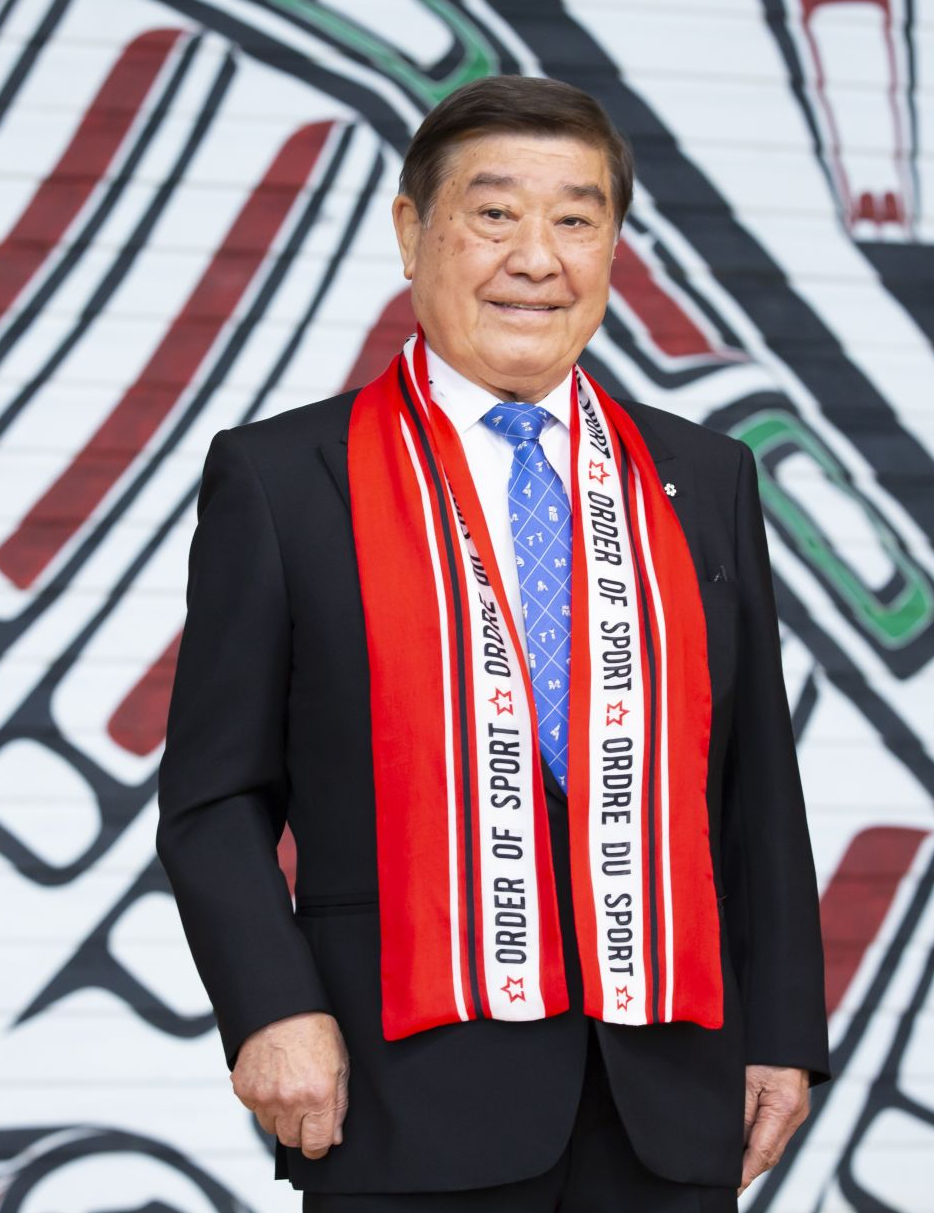Asian Heritage Month
In support of Asian Heritage Month, Canada's Sports Hall of Fame is proud to share the
stories of 4 remarkable Order of Sport recipients and Hall of Famers of Asian descent.
Lori Fung
Rhythmic Gymnastics, Athlete
Inducted: 2004
Rhythmic Gymnastics, Athlete
Inducted: 2004
In 1982, at the age of 19, Lori Fung became Canada's rhythmic gymnastics champion. Upon learning that her sport was to be included in the Olympic Games for the first time in 1984, Lori set her heart on making it to the Games.
Internationally, Lori was virtually unknown. She ranked 23rd in the world prior to the Games. Her hard work paid off, and her brilliant performances earned her the all-around Olympic gold medal.
Her medal also earned her celebrity status - she performed for such prominent figures as Pope John Paul II, Prince Charles and Princess Diana, and the Prime Minister of Canada.
Carol Huynh
Wrestling, Athlete
Inducted: 2017
The middle child of five siblings, Carol Huynh was the first Canadian-born child after her family emigrated as refugees from Vietnam.
She was introduced to wrestling by her high school coach, and quickly progressed in the sport, becoming a multiple-time Canadian champion.
At the 2008 Olympic Games in Beijing, she was not favoured to win, but made history by becoming the first Canadian woman to win Olympic Gold in the women’s 48 kg division.
When wrestling was taken out of the Olympic programme after the 2012 Olympic Games, Carol was chosen by fellow world-class wrestlers to advocate on their behalf at a 2013 Olympic Committee Session to have wrestling readmitted, which she did successfully.
Norman Kwong
Football, Athlete
Inducted: 1975
Norman Kwong was the first Chinese-Canadian to play in the CFL. He spent his entire football career in his home province of Alberta, playing three seasons in Calgary and ten seasons in Edmonton.
He was a member of four Grey Cup-winning teams, consistently winning accolades for his brilliant on-field performances. He was a 5-time CFL all-star and 3-time recipient of the Eddie James Memorial Trophy.
After leaving the field, Norman continued to be an asset to the game and remained a prominent figure in Canadian football. He helped transform the struggling Calgary Stampeders as president and GM, both financially and on the field.
An eloquent speaker and well-loved community man, Norman was appointed lieutenant-governor of Alberta in 2005.
Hiroshi Nakamura
Judo, Builder
Inducted: 2023
When Hiroshi Nakamura moved to Canada from Japan in 1968, he was committed to sharing his love of judo. Hiroshi began offering lessons at Vanier College in Montréal while giving free demonstrations in the cafeteria at lunchtime to spark student interest.
In 1973 he opened the Shidokan Judo Club, which became the most successful competitive judo program in Canada. Hiroshi coached Canadian judokas at 13 World Championships between 1969 and 2007, and served as coach of the Canadian judo team at five Olympic Games.
Hiroshi has also used his expertise to help others by teaching women’s self-defence classes, offering judo programs for at-risk youth, and supporting young judokas in need of financial assistance through the Nakamura Gill Foundation.

Courtesy of Order of Sport collection, Canadian Museum of History.
2. Consider analyzing materials (i.e., is it wood, stone, plastic, etc.?)
4. Are there any inscriptions (i.e., are there any markings that are printed, stamped, engraved)?
5. What symbolism do you see?
6. How is the object oriented? (i.e., Does it have a presumed front, back, bottom, or top?)
7. What features do you think it might share with similar objects?
8. Does the object prompt some kind of action or performance?
9. What is this artefact?
10. What stories or information do you think it tells?
Rowing is the propelling of a boat using a fixed oar as a lever. In modern sports, rowers race against each other as individuals or in crews of two, four or eight.
Courtesy of Order of Sport collection, Canadian Museum of History.
2. Consider analyzing materials (i.e., is it wood, stone, plastic, etc.?)
4. Are there any inscriptions (i.e., are there any markings that are printed, stamped, engraved)?
5. What symbolism do you see?
6. How is the object oriented? (i.e., Does it have a presumed front, back, bottom, or top?)
7. What features do you think it might share with similar objects?
8. Does the object prompt some kind of action or performance?
9. What is this artefact?
10. What stories or information do you think it tells?
Rowing is the propelling of a boat using a fixed oar as a lever. In modern sports, rowers race against each other as individuals or in crews of two, four or eight.
Courtesy of Order of Sport collection, Canadian Museum of History.
2. Consider analyzing materials (i.e., is it wood, stone, plastic, etc.?)
4. Are there any inscriptions (i.e., are there any markings that are printed, stamped, engraved)?
5. What symbolism do you see?
6. How is the object oriented? (i.e., Does it have a presumed front, back, bottom, or top?)
7. What features do you think it might share with similar objects?
8. Does the object prompt some kind of action or performance?
9. What is this artefact?
10. What stories or information do you think it tells?
Rowing is the propelling of a boat using a fixed oar as a lever. In modern sports, rowers race against each other as individuals or in crews of two, four or eight.




